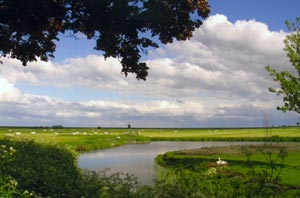The use of imidacloprid in Dutch agriculture rose from 668 kg on 5,335 hectares in 1995 to 6, 377 kg on 40,007 hectares in 2004 . Since 2004 major contamination of Dutch surface water with imidacloprid has been detected by the Water Boards, particularly in the western part of the country. The highest concentration was measured in Noordwijkerhout in December 2005: 320,000 ng/L. The maximum permissible limit for imidacloprid in Dutch surface water is 67 ng/L. Imidacloprid is stable to breakdown by water at neutral pH and degrades with a half-life of 355 days in more basic solutions.
Emmererfscheidenveen (05-04-2007): 4,200 ng/L;
Amsterdam (04-08-2004): 6,000 ng/L;
Noordwijkerhout (19-12-2005): 320,000 ng/L;
Rijnsburg (09-08-2005): 120,000 ng/L;
Waddinxveen (15-03-2007): 54,000 ng/L;
Nieuwerkerk aan den IJssel (22-07-2004): 35,000 ng/L;
Boskoop (23-06-2005): 12,000 ng/L;
Numansdorp (15-05-2006): 5.460 ng/L.
The maximum permissible limit for imidacloprid in Dutch surface water is 67 ng/L.
Sources: Information provided by the Dutch Central Statistics Office (CBS), The Hague and the Dutch Water Boards

- Log in to post comments
